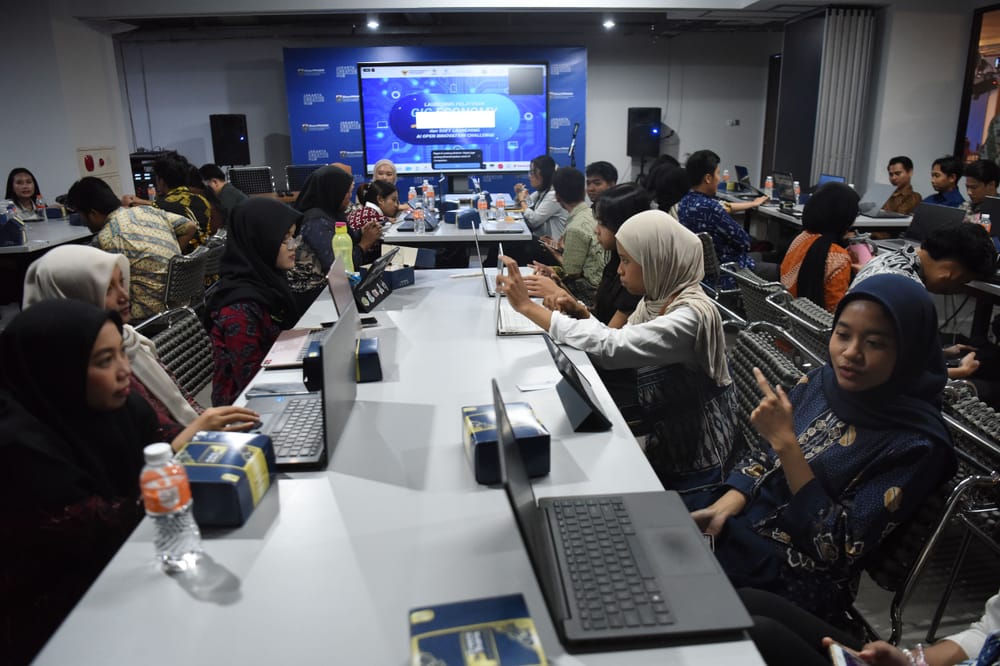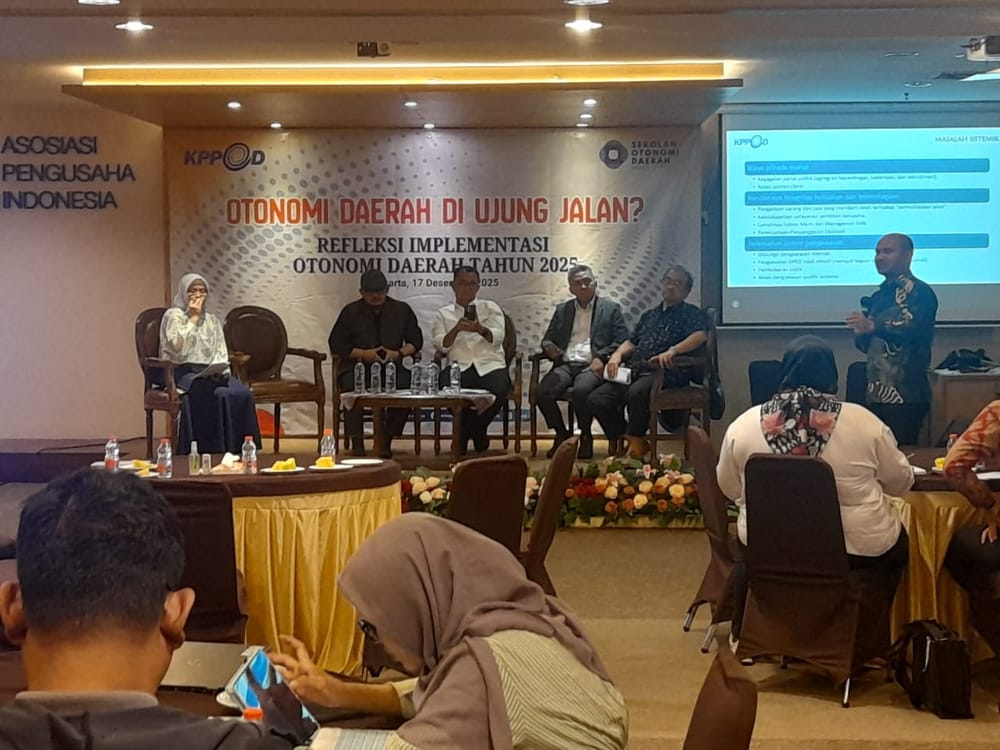Learning from the negative impact of government spending efficiency on economic growth, the Ministry of Finance is changing its approach to compiling the 2026 State Revenue and Expenditure Budget (APBN). No longer drastically cutting the budgets of ministries/institutions, the government is choosing to maximize the momentum of issuing Government Securities (SBN) and using the National Socio-Economic Single Data (DTSEN) for the implementation of priority spending.
These changes were conveyed by Director General of Financing and Risk Management Suminto and Director of Economic Sector Budget Tri Budhianto in front of journalists participating in the Ministry of Finance's Media Gathering "Thorough Discussion of the 2026 State Budget" in Bogor, West Java, Friday (10/10/2025). Both shared similar views that efficiency can be interpreted differently next year.
Suminto explained that, like taxes, debt is an instrument, not a goal. The government borrows not because it wants to, but because it needs financing to cover the APBN deficit, which is set at IDR 689.1 trillion or equivalent to 2.68% of GDP in 2026. This need is inseparable from the basic functions of fiscal policy, namely allocation, distribution, and stabilization.
"There are still many development goals that we must achieve, with the aspiration of becoming a more prosperous, more advanced country with higher income. Therefore, a large and sufficient 'cake' is needed so that we can allocate it well, measurably, and carefully," said Suminto.
Currently, with a total central government debt of IDR 9,138.05 trillion with a debt-to-GDP ratio of 39.86%, the government is quite flexible with a debt ratio that is quite low compared to other countries. Of this nominal amount, IDR 1,157.17 trillion comes from bilateral, multilateral, commercial, and domestic loans, while IDR 7,980.87 trillion comes from the issuance of SBN.
Suminto ensured that in currency equivalence, IDR 6,554.95 trillion or 71.73% of government debt uses Rupiah, so it is not affected by currency fluctuations that have occurred recently. The remainder, with a percentage of 28.27%, government debt worth IDR 2,583.1 trillion is spread in US Dollars, Yen, Euros, and others.
Healthy and well-managed debt
With such a healthy debt portfolio, Suminto explained several government strategies to maximize financing, starting from managing SBN risk using floating rates and fixed rates alternately, as well as reducing debt in foreign currencies so that it is not too exposed to exchange rate movements.
In addition, the debt maturity profile is also taken into account. Debt with a short tenor has a lower interest rate but has large installments. Conversely, debt with a long tenor has a high interest rate but more manageable installment values.
"So we are looking for debt with an optimal maturity period, between 7-8 years, which is not too short and not too long, so that it is always flexible and can be adjusted to the needs of the APBN, market developments, and cash position management," he explained.
Read also:

An active, always liquid SBN market, and sufficient room for maneuver, according to Suminto, is a valuable momentum. The government uses this momentum to issue SBN at any time with various tenor variations, while paying attention to a cash position that remains sufficient for spending proportionally.
"Our approach is a strategy of collecting more, spending better, with sustainable, prudent, and creative financing, all three of which are an integrated series that will always be pursued efficiently, productively, and sustainably," said the echelon one official.
Joining the gathering session virtually via Zoom teleconference, Minister of Finance Purbaya Yudhi Sadewa reaffirmed that government debt should not only be measured in nominal terms, but also in relation to GDP. Indonesia's debt of nine thousand trillion, according to him, is still safe by international standards.
"Debt should not be used [to create] negative sentiment towards our economy, because we are quite prudent. We will reduce it as optimally as possible. If there is debt, it must be maximized, there should be no leaks that waste state money," Purbaya emphasized.
Large spending must be precise
In addition to ensuring that debt is managed in a healthy and optimal manner, the 2026 state budget spending, which is set at Rp3,842.7 trillion, is ensured to target 8 priority agendas, including food security, energy security, free nutritious meals, education, health, village development, defense, and investment acceleration.
In order for these eight agendas to be implemented in an integrated manner, the 2026 state budget spending is divided into 11 functions, with the largest spending allocated to economic spending of Rp823.7 trillion, public service spending of Rp794.4 trillion, and education spending of Rp459.7 trillion.
Of this spending amount, the government has determined that spending worth Rp1,377.9 trillion will be benefits directly received by the community through 18 programs, ranging from the Family Hope Program, Free Health Checks, school revitalization, FNM, to Fishing and Salt Village programs.
With such a wide range of programs that are prone to misuse, the Director of Budget for Economic Affairs, Tri Budhianto, emphasized that the use of DTSEN is very important, considering that the database already has records of each recipient, including their name, address, and decile that determines their eligibility.
"The Ministry of Finance collects various data and we combine it with all programs to ensure it is on target. Not reducing subsidies, but reforming them. Again, efficiency is not about cutting, but diverting budgets that do not touch the community layer, to those that directly touch the community," Tri emphasized.
Tri did not deny that the government programs currently being developed are considered populist and short-term oriented. According to him, implementation problems do need to be underlined, but that is not a reason to ignite unhealthy antipathy.
"If we want to be honest, those who feel the benefits of government programs are actually silent. If we pay attention, if the recipients express their feelings, we will know that this program is actually good. This means that we need to ensure that this program is carried out correctly and achieves its objectives," he said.
The strategy of utilizing the debt ratio to freely issue government bonds in a measured manner and utilizing DTSEN in state budget spending is a sign that the government is learning from past experiences. Inaccurate debt financing due to leaks or misdirected spending is an important evaluation in moving forward.
Previously, Researcher at the Center of Reform on Economics (CORE) Indonesia, Yusuf Rendy Manilet, stated that the integration of single data is crucial to ensure the accuracy of state spending allocation. The validity of recipient identities can also be better guaranteed through collaboration between the Ministry of Finance and the records of the Population and Civil Registry Office.
"The digitalization of the distribution system will play a major role in closing loopholes. The Presidential Instruction is an initial framework, but it needs to be followed up with the use of transparent and accountable digital platforms to detect manipulation and streamline with other sectors," Rendy explained when contacted by SUAR on Monday (30/9/2025).
Agreeing with Rendy, Head of Macroeconomics and Market Research at Permata Bank, Faisal Rachman, believes that the less than optimal realization of government spending, even though it has entered the fourth quarter of this year, encourages the large target for next year to be realized more efficiently.
"Spending realization will be efficient if it has a high multiplier impact to accelerate growth, such as spending on goods and capital for logistics and infrastructure needs that can accelerate the implementation of priority programs FNM, food security, and energy," Faisal told SUAR on Monday (23/9/2025).







